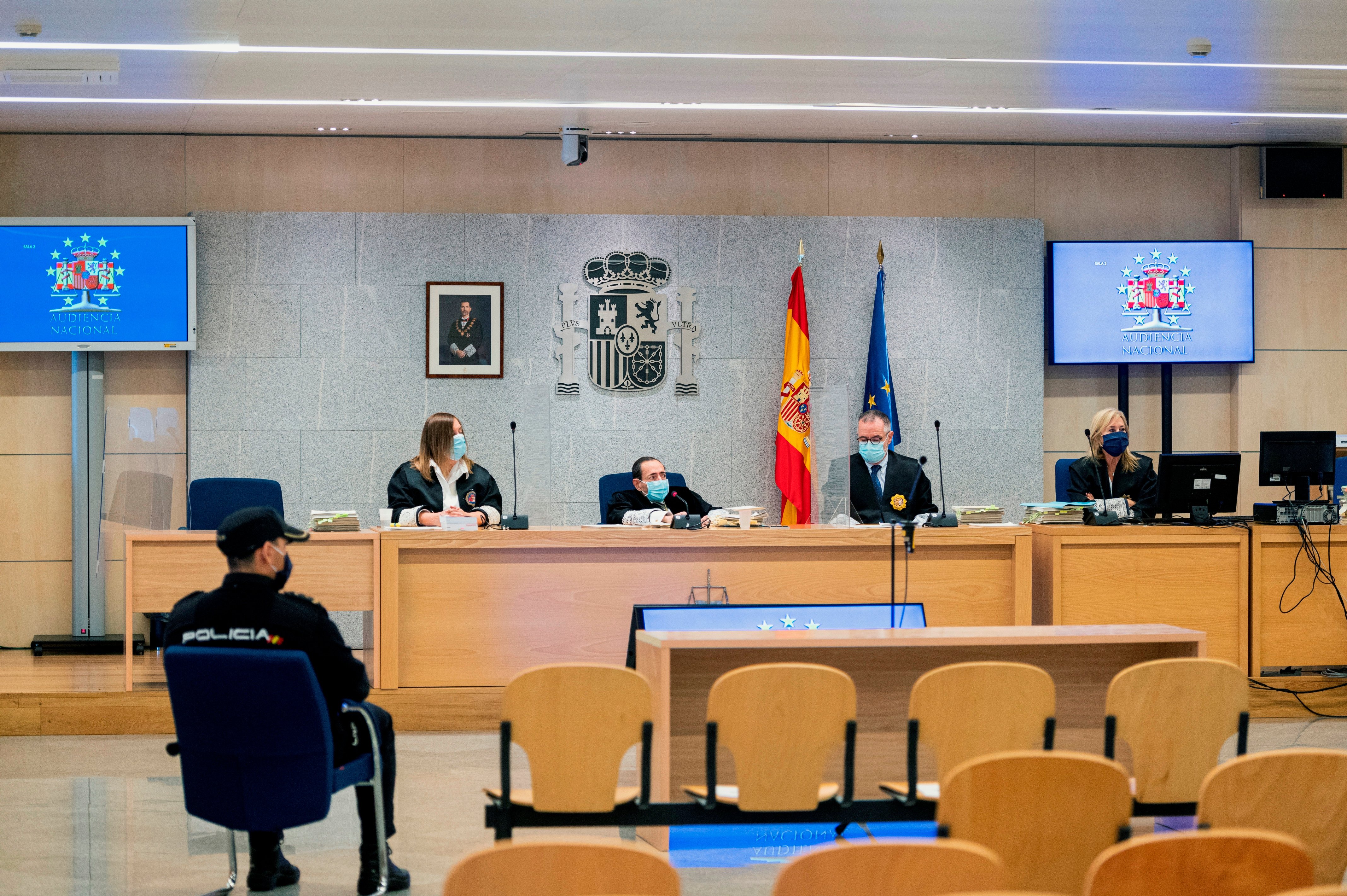First day of the trial for the Islamist terrorist attacks in Barcelona and Cambrils on August 17th, 2017 and the first witnesses. After the declarations by the three defendants, Mohamed Houli Chemlal, Driss Oukabir, and Said Ben Iazza, the first witness to be called by the public prosecutors was the inspector of the Catalan Mossos d'Esquadra police who led the investigation during its first year.
The officer - who was identified by a number and did not appear on camera in the live transmission - detailed how the terror cell intended to carry out the attacks, its planned timetable, the relationship between the terrorists and how the cell was structured. The head of the investigation also gave a full chronology of events from the moment of the van attack on pedestrians on Barcelona's Rambla and where the investigation led them.
The house at Alcanar at the southern extreme of Catalonia was key, in two senses. Used as a bomb factory by terrorists, the fatal explosion that was accidentally set off here changed the original plans of the terrorists. And it also meant that, in the rubble of the destroyed villa, lay an amount of incriminating evidence which later allowed the Mossos to reconstruct the days before the attacks.
According to the witness, the attack was intended to be "the most important since the 2015 terrorist attacks in Paris." The Mossos d'Esquadra inspector explained that the terrorists carried out more than 40 internet searches, from a mobile phone that was found in the ruins of the Alcanar house, for the Barça-Betis football match scheduled for August 20th at the Barcelona club's Camp Nou stadium, with a crowd of around 80,000 likely to be in attendance.
On August 16th and 17th, they rented the vans with which they intended to carry out these attacks. The idea was to load the vans with butane cylinders, and once they set off their own bombs, the gas cylinders would also explode, vastly amplifying the effect. They were also intending to use suicide vests and tube-like hand grenades. Police found 19 of these in the Alcanar house.
Testimony by the head of Mosso d'Esquadra police investigation: "The attacks were going to be carried out with vans filled with explosives and butane cylinders."
The head of the investigation detailed how the cell was structured. It was pyramidal, with three levels, and at the top, the imam of Ripoll, Abdelbaki es-Satty, who was the spiritual guide and leader of the group, who died in the Alcanar blast. At the second level were the terrorists who prepared and executed the attack, most of whom were shot dead by Mossos officers, and at the third level were the three defendants, as collaborators to prepare the logistics. "The terrorists formed a grassroots network, which is one where members have strong friendship links, and even family relationships, as was true in this case. As well, they'd all known each other since they were very small, so they had huge trust in each other."
The inspector said the relationship within the group in the small northern Catalonia town of Ripoll was practically endogamous. "They lived by themselves and for themselves," he explained.
Mossos inspector testifies about the terror cell structure while the defendants watch and listen from behind the glass.
Trips to Brussels and Paris
The narrative explained to the court by the Mossos inspector also recounted various trips made by different members of the cell. The most interesting, said the inspector, was a trip to Paris by Younes Abouyaaqoub and Mohamed Hichamy, which was one of the first pieces of evidence given in his testimony.
The inspector listed the trips made since 2015. In October, the imam es-Satty travelled to Brussels and returned in April 2016 to Ripoll. In March 2017, he went to Brussels again and from July 20th to August 9th was in Morocco.
From July 2nd to 13th, one of the defendants in the trial, Driss Oukabir, was also on a trip to Morocco. He was due to return on July 12th but missed his plane, the inspector said.
Mohamed Houli, another of the defendants, travelled to Morocco in March 2016.

